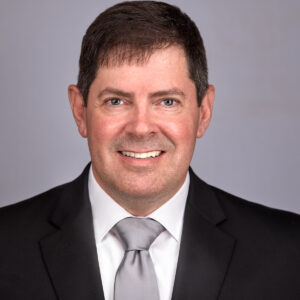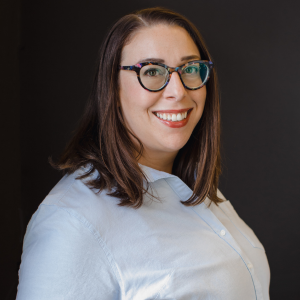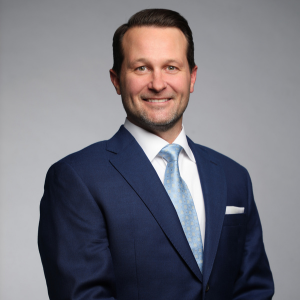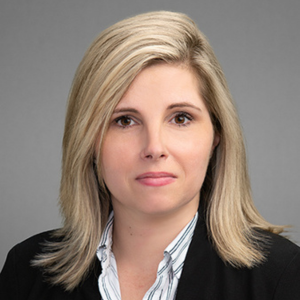Reaching and Teaching Families by Phone
| BY CRAIG LUND |
| Reaching and teaching families by phone Keeping lines of communication open is improved with a new take on existing technology |
| Today, families are more geographically scattered than in the past, and maintaining direct involvement with loved ones in long-term care settings can be a daunting experience. Even in-area families may find it difficult to stay connected without being physically present in the facility. Security and privacy regulations have added another level to the challenge of providing information. I’ve learned this through personal experience. A few years ago, my father-in-law fell and broke his leg, requiring surgery. After a short hospital stay, he was transferred to a rehab facility for a few months. No problem watching out for Dad, right? Wrong. Because he lives in Hawaii and my wife and I live in Denver, the facility had no way to authenticate my wife’s identity in order to comply with HIPAA regulations. Therefore, the information and assurances she needed to monitor his condition were unavailable. Consequently, she flew to Hawaii and spent a month there until she was satisfied that her father truly was on the road to recovery. Not only did I experience this confusion firsthand, but my business partner also faced a similar situation with his wife’s grandmother. In this case, several family members were trying to reach decisions for what turned out to be an end-of-life scenario. As the facility provided information to one family member and it was passed throughout the family, the accuracy of the messages began to erode. Finally, my partner’s wife ended up traveling to the facility to get direct, clear, face-to-face information. Realizing that ours were not isolated events, my partner and I decided to develop a solution that would enable providers to authenticate the caller requesting information. Aside from HIPAA concerns, there are logistical challenges for facilities to resolve before disseminating information to all concerned parties. Our company, CareTouch Communications, Inc., did a profile analysis of a typical long-term care resident. We discovered that there are easily 10 to 15 people who are interested in that person’s well-being and they are not necessarily all family members. And yet the provider barely has time to keep in touch with one or two, let alone 15 loved ones, friends, or neighbors. This is where our system comes in. Upon admission, each resident or designated representative works with the facility to establish his or her “community”-that is, those people who are approved by the resident and/or family to receive information. This is not a blanket information package. The resident can also select who will receive what type of information. For instance, a resident’s children might receive detailed clinical information, while grandchildren would be more interested in knowing what he or she is doing socially. Once a profile has been established for authorized community members, CareTouch uses voice biometrics to establish the identity of each person in the resident’s community. During the initial contact call, the party establishes a “voiceprint,” which is stored in the database as an identifier. Like a fingerprint, a person’s voiceprint is unique to the individual. Understanding the progressive effects of aging is difficult for many families. As the system conveys resident information, it also offers education on what that information means. For many families, dealing with providers in an extended care facility is a first-time experience. They may be suspicious or naive about what they are being told about their loved one’s condition and care. For example, they may know that their mother has been diagnosed with osteoporosis, and the family is clear on what that condition is-a “brittling of the bones.” A month later, the family learns that she also has diabetes. They know what that means, too. What the family probably doesn’t know is that diabetes exacerbates osteoporosis because it accelerates bone porosity. They most likely are unaware that this combination can lead to a fracture in a major weight-bearing bone, in turn leading to a fall. The family says, “Mom fell and broke her hip” when, in fact, Mom’s hip broke and then she fell. Through education, the family can be prepared for possibilities such as these. Constructing a message is quite simple. A care provider logs on to CareTouch over the Internet. System security ensures that providers only see residents to whom they are assigned. The system mirrors the information that the facility is presently charting on residents and enables a care provider to construct a message by clicking on values that match what is being charted. The system organizes information by health conditions, ADLs, activities, and other assessment information. Each value has a text string associated with it. For example, if a dietary update is needed, a selection can convey the message that Mom (Mabel, MJ, or another familiar predetermined appellation) needs to have her food mechanically softened. Other information is available, too-“Mom is eating in the dining room with other residents.” So, within the system, each value has text in layman’s terms that is assembled as part of the larger message. Associated educational information would continue-for example: “By the way, if you are visiting or take Mom out to eat remember to order food that requires little or no chewing.” Staff do not have to write the messages attached to the values. Messages are delivered by an electronic personification whom we call Faith. Faith is a state-of-the-art synthesized, humanlike voice offering messages that are conversational in tone. The system is capable of delivering messages and information to the resident’s community via several formats such as e-mail, text messaging, or voice (telephone). Voice is preferred for several reasons. Messages are targeted to specific persons who can be authenticated before message delivery, which is not possible with e-mail or text messaging. Voice messages are also convenient. The recipient can listen to a message while doing something else, whereas e-mail and text messages require the recipient’s full attention. And unlike e-mail or text messaging, using voice allows CareTouch to know if the entire message was listened to or if the recipient hung up before it was completed. Facilities mitigate risk by keeping communication channels open. Regular communication coupled with educational information helps providers build stronger relationships with each resident’s community. For instance, Mr. Smith, a disgruntled family member who lives far from the facility, learns that his mother had a fall. He immediately threatens the facility with a lawsuit. Our system provides the facility with a record of communication, thus allowing the provider to say, “Mr. Smith, over the past year we provided you 48 updates on your mother and 15 of those updates had educational information on your mother’s disease and possible outcomes. And by the way, you hung up halfway through six of those messages.” The system can provide that level of detail and reaffirms that care is being delivered as agreed upon. To keep the information flowing, the facility receives reminders that a message is going to be broadcast to a resident’s community. This gives the point person 48 hours to enter updates, making sure that the communication is accurate and as up-to-date as possible. Another benefit to families is that it gives local family members, who generally have hands-on responsibility, an opportunity to take a vacation, a business trip, or time for some self-care. Knowing that others in the loop will be apprised of the resident’s status gives them the peace of mind and confidence that the resident is receiving quality care. With our system families will also receive reminders of special occasions and resident preferences. “Grandma’s birthday is next week and she loves daffodils; would you like to send her a bouquet?” (And we take care of the transaction for them from purchase to delivery, with a follow-up message noting that the flowers did arrive and Grandma loved them.) This technology is Web-based, requiring no new software. For less than a dollar per day per resident, a facility can keep each resident’s entire community informed and educated, creating a win-win equation that gives peace of mind to everyone. A communications channel such as this offers a facility the opportunity to save time, maintain regulatory compliance, reduce the risk of litigation, and gain a positive reputation in the community and with the people it serves. A few minutes per resident per week can go a long way toward keeping a lot of people reassured, no matter where they happen to be. Craig Lund is President of CareTouch Communications. For further information, call (888) 333-1456 or visit www.caretouch.net. To send your comments to the author and editors, please e-mail lund0805@nursinghomesmagazine.com. To order reprints in quantities of 100 or more, call (866) 377-6454. |
I Advance Senior Care is the industry-leading source for practical, in-depth, business-building, and resident care information for owners, executives, administrators, and directors of nursing at assisted living communities, skilled nursing facilities, post-acute facilities, and continuing care retirement communities. The I Advance Senior Care editorial team and industry experts provide market analysis, strategic direction, policy commentary, clinical best-practices, business management, and technology breakthroughs.
I Advance Senior Care is part of the Institute for the Advancement of Senior Care and published by Plain-English Health Care.
Related Articles
Topics: Articles , Facility management , Leadership











